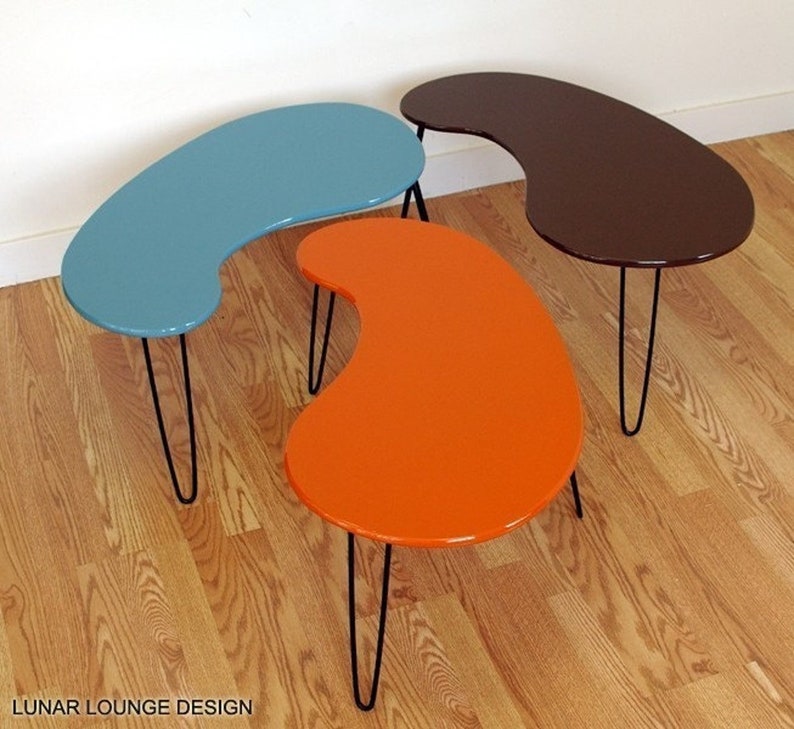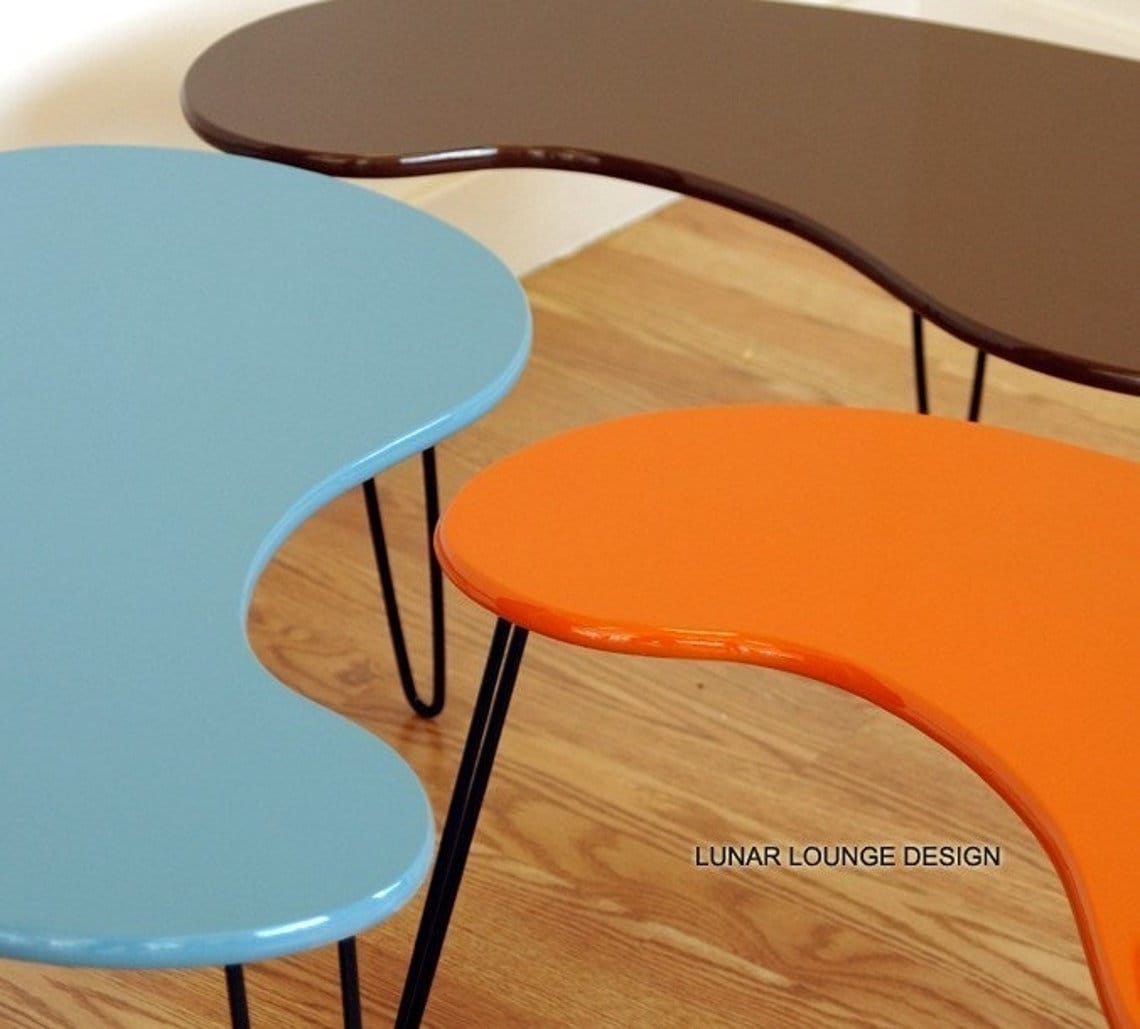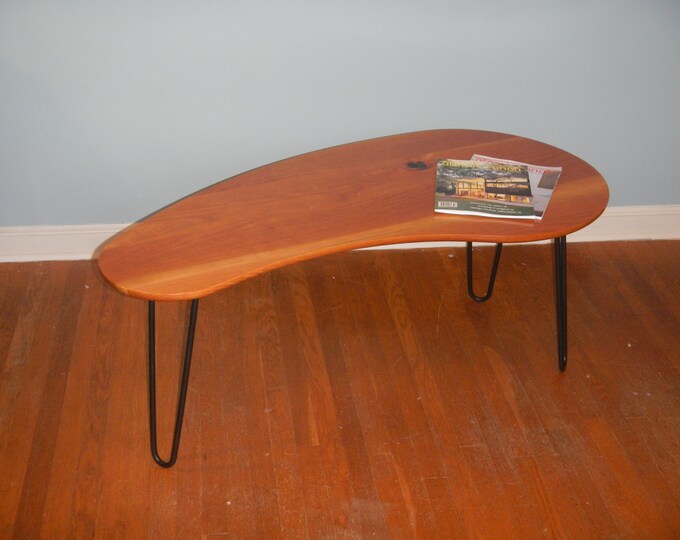The Kidney Bean Coffee Table: A Mid-Century Modern Icon
The Kidney Bean Coffee Table: A Mid-Century Modern Icon

The kidney bean coffee table, with its distinctive shape and sleek lines, is a true icon of mid-century modern design. More than just a functional piece of furniture, it represents a period of innovation and artistic expression, capturing the spirit of the 1950s and 1960s. This article will delve into the history, design, and enduring appeal of this iconic coffee table, exploring its origins, evolution, and lasting influence on interior design.
Origins and Inspiration:
The kidney bean coffee table’s origins can be traced back to the post-World War II era, a time of significant social and cultural change. The war had brought about a new appreciation for functionality and simplicity, while the burgeoning middle class sought affordable yet stylish furniture for their homes. This demand for modern, practical, and aesthetically pleasing designs led to the rise of mid-century modernism.
One of the key figures in this movement was Eero Saarinen, a Finnish-American architect and designer known for his innovative use of materials and forms. In 1956, Saarinen designed the iconic "Tulip" table, a single-pedestal table with a circular top. This design, inspired by the organic shapes of nature, paved the way for a new wave of furniture that embraced unconventional forms.
The kidney bean coffee table, though not directly attributed to Saarinen, was undoubtedly influenced by his work. It adopted the same principles of simplicity, functionality, and organic shapes, while offering a more compact and versatile option for smaller living spaces.

Design and Features:
The defining characteristic of the kidney bean coffee table is its distinctive, asymmetrical shape, resembling a kidney bean or a crescent moon. This unique form provides a sense of dynamism and movement, while also offering ample space for drinks, snacks, and decorative items.
The table’s design typically features a single, central pedestal base, often made of wood, metal, or a combination of both. This base provides stability and support, while also adding a touch of elegance to the overall design. The top of the table is usually made of glass, wood, or laminate, offering a smooth and easy-to-clean surface.
Materials and Construction:
The materials used in the construction of kidney bean coffee tables have evolved over the years, reflecting changing trends and technological advancements. Early models were often made of solid wood, such as walnut, oak, or mahogany, with a polished or lacquered finish. Later designs incorporated metal bases, often in chrome or brass, to create a more contemporary look.

Glass tops became increasingly popular in the 1960s, offering a sleek and modern aesthetic. Laminate tops, introduced in the 1970s, provided a more affordable and durable option. Today, kidney bean coffee tables are available in a wide range of materials, including recycled wood, reclaimed metal, and even acrylic.
Evolution and Variations:
The kidney bean coffee table has undergone numerous variations and adaptations over the years, reflecting changing tastes and design trends. Some popular variations include:
- Rounded kidney bean: This classic design features a smooth, rounded shape, providing a soft and inviting feel.

- Angular kidney bean: This variation features sharper edges and angles, creating a more contemporary and geometric look.
- Double kidney bean: This design incorporates two kidney bean shapes, creating a larger and more expansive table.
- Multi-level kidney bean: This variation features multiple tiers, offering additional storage space and display areas.
Popularity and Enduring Appeal:

The kidney bean coffee table has remained a popular choice for homeowners and designers alike for several reasons:
- Versatility: Its compact size and unique shape make it suitable for a wide range of living spaces, from small apartments to spacious living rooms.
- Functionality: It provides ample space for drinks, snacks, and decorative items, while also serving as a focal point for conversation and entertainment.
- Style: Its distinctive design adds a touch of sophistication and elegance to any room, complementing a variety of interior styles, from mid-century modern to contemporary.

- Timeless appeal: Its classic shape and enduring design have ensured its continued relevance in the ever-evolving world of interior design.
Modern Interpretations:
In recent years, designers have continued to reinterpret the kidney bean coffee table, incorporating new materials, finishes, and design elements. Some modern interpretations feature:
- Bold colors: Brightly colored finishes, such as turquoise, mustard yellow, or coral, add a pop of personality to contemporary interiors.
- Metallic accents: Gold, silver, or copper accents add a touch of glamour and sophistication to the design.
- Unique materials: Reclaimed wood, recycled metal, or even concrete are used to create a more sustainable and industrial-inspired look.
- Geometric patterns: Geometric patterns, such as stripes, chevrons, or polka dots, add visual interest and texture to the table’s surface.
Conclusion:
The kidney bean coffee table is more than just a piece of furniture; it is a symbol of a bygone era, a testament to the enduring power of design, and a timeless classic that continues to inspire and delight. Its distinctive shape, versatility, and enduring appeal have ensured its place as a beloved icon of mid-century modern design, and its continued evolution ensures that it will remain a popular choice for homeowners and designers for generations to come.
Beyond the Coffee Table:
The kidney bean shape has also inspired other furniture designs, including:
- Kidney bean chairs: These chairs offer a comfortable and ergonomic design, with a distinctive kidney bean-shaped backrest.
- Kidney bean ottomans: These footstools provide a stylish and functional addition to any living space.
- Kidney bean side tables: These smaller tables offer a versatile storage solution for smaller items.
The Kidney Bean Coffee Table: A Legacy of Design:
The kidney bean coffee table’s legacy extends beyond its aesthetic appeal. It represents a period of innovation and experimentation in design, a time when form and function were seamlessly intertwined. It stands as a reminder of the power of design to shape our lives and inspire our imaginations. As we continue to embrace the principles of mid-century modernism, the kidney bean coffee table remains a timeless icon, a symbol of elegance, functionality, and enduring style.
Also read: Ootd Hijab Untuk Lebaran
Posting Komentar untuk "The Kidney Bean Coffee Table: A Mid-Century Modern Icon"